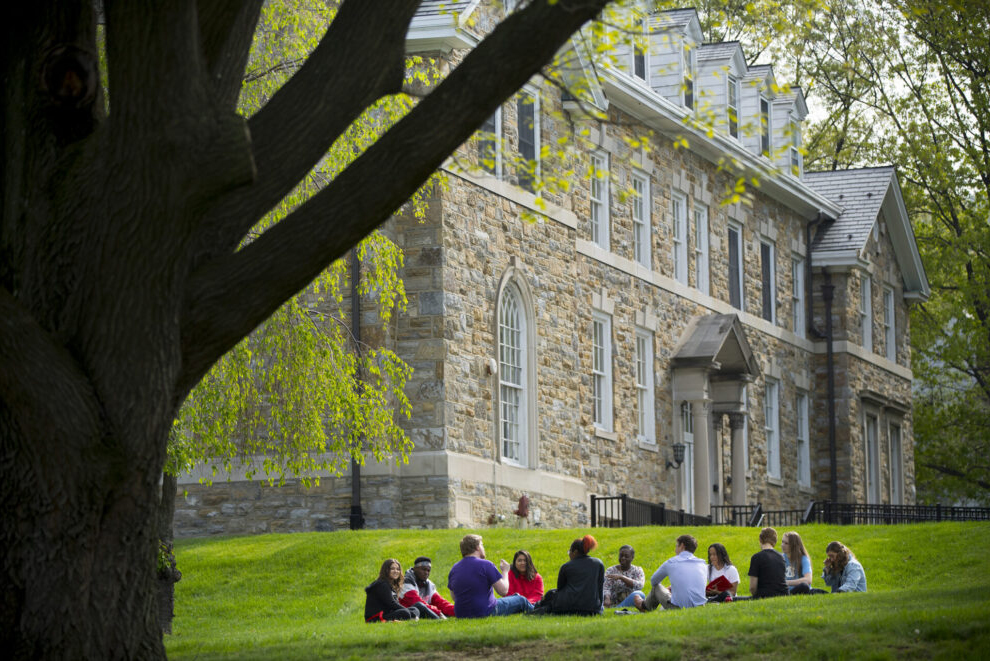In the almost deafening silence of the academic world, Albright College in Reading, Pennsylvania, has taken a step that just a few years ago would have seemed unthinkable, moving to sell a large portion of its art collection. Behind this decision lies a motivation as simple as it is brutal: survival.
The small liberal arts college has entrusted 524 lots to the Downingtown-based auction house Pook & Pook for an online auction scheduled for July 16. Works by artists such as Jasper Johns, Romare Bearden, Gordon Parks, and Salvador Dalí long displayed in the Doris C. Freedman Gallery, will now be offered to the highest bidder, sparking protests from donors and alumni alike.
James Gaddy, the college’s vice president for administration, explained that the move was necessary to “stop the bleeding,” referring to a $20 million deficit accumulated in just two years. Gaddy, along with President Debra Townsley, was appointed in 2024 to restore the institution’s financial health.
According to Gaddy, the collection—roughly 2,300 pieces, mostly works on paper—was never considered central to the college’s educational mission, and the maintenance costs had far exceeded the estimated value of the works, which he put at around $200,000.
But the financial picture appears more complex. In addition to administrative shortcomings and declining enrollment, the effects of federal funding cuts have weighed heavily on the entire U.S. higher education system. During his term, the Trump administration significantly reduced grants to universities, accusing some institutions of failing to address issues such as antisemitism and withholding tens of billions of dollars pending compliance with new political guidelines.
According to data from Higher Ed Dive, a specialized higher education news outlet, since 2016, 129 academic institutions in the United States have either closed or merged, ten of them in Pennsylvania alone. Among them are Keystone College and Rosemont College, both victims of the same dynamics of rising fixed costs and lack of public funding.
Phillip Earenfight, a former museum director and professor at Dickinson College, described Pennsylvania as a “crowded ecosystem” where academic institutions compete for a shrinking pool of students. In such an environment, drastic choices like selling off collections become tools of last resort.
The auction announcement has not gone unnoticed, particularly among those who contributed to the founding and development of the Freedman Gallery. The daughters of Doris C. Freedman, matron and pioneer of New York City’s cultural policy, sent a letter to the college calling the sale “shortsighted and counterproductive.” They warned that dispersing the collection would do little to alleviate the institution’s debt and would contradict the donor’s original intent: to create a space for student learning and community engagement through the arts.
Within the college, few voices have spoken out. Some of the most outspoken critics, such as David Tanner, Dean of Arts, and gallery curator Rich Houck, were dismissed. John R. Pankratz, a history professor, claimed that Gaddy himself had proposed the idea directly to Tanner, who firmly opposed it.
Major U.S. museum associations, including the AAMG and the American Alliance of Museums, enforce strict rules: proceeds from the sale of artworks must be reinvested exclusively in new acquisitions. However, Albright College is not a member of any of these organizations, thereby circumventing any ethical obligations.
Maxwell L. Anderson, former director of the Whitney Museum, noted that alternatives to open market sales do exist: when the Corcoran Gallery in Washington closed in 2014, its collection was redistributed to public institutions, and its art school was absorbed by George Washington University.
At the end of this path, Albright College is preparing to part with its art collection, sacrificing symbolic value for marginal financial return. Yet what is lost is not merely a set of artworks: it is part of the institution’s very identity.
This crisis, however, is not isolated. It reflects a broader and more alarming reality: an educational system under severe strain from government cutbacks, demographic imbalances, and painful managerial decisions. In this context, monetizing cultural heritage becomes an extreme and often ineffective response. As Doris Freedman’s daughters remind us, selling off memory will not balance the books, but it may irreversibly empty, along with the walls, the very essence of educational purpose.












